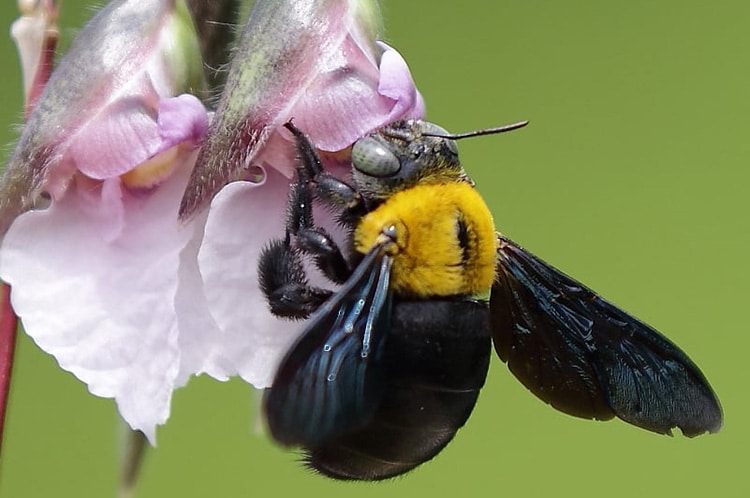Explain Difference Between Communal Solitary and Social Bees
The study of social behaviour remains active involving the investigation of proximate mechanisms that is behaviour triggered by immediate stimuli coming from the outside world or inside the body the survival and reproductive consequences of sociality and the evolution of human behaviour and cultural traditions. Because transmission is both the physical encounter of a new host and infecting it several different elements determine parasite transmission success.

Types Of Honey Bees And Life Cycle 4 Stages Of Honey Bees From Egg To Adult
They only lay eggs.

. Feeding aggregations parental care of the young and communal nest sites. The causes of this lower brood productivity could not be elucidated by. To better understand the adaptive.
Contrasting individual with emergent colony-level effects of fear can thus illuminate how predators shape pollination by social bees. A look at the parameters that determine fitness of the two parties suggests that social hosts differ from solitary ones primarily in the structure of transmission pathways. Communication complex nest construction environmental control defense and division of the labor are just some of the behaviors that honey bees have developed to exist successfully in social colonies.
Both social bees exhibited directionality of movement and had similar residence in contrast to the random movement and shorter residence of the solitary bee. Surprisingly little is known about how these communication systems change as social behavior evolves particularly during the transition between solitary and group living. Probability and net food uptake we find that body size should have no effect on the foraging strategies of solitary bees.
Eusociality from Greek εὖ eu good and social the highest level of organization of sociality is defined by the following characteristics. Changes in communication genes might hint at changes in social bees brains. Small social bees should tend to maximise food uptake and large social bees to minimise mortality rate.
Individuals use signals to identify each other and coordinate tasks. Workers in eusocial colonies. This study shows that as sociality is gained and lost in halictid bees convergent.
Correlations between ovariole number and the social behaviour of wild-type bees. Social behaviorists today study a wide range of. Cooperative brood care including care of offspring from other individuals overlapping generations within a colony of adults and a division of labor into reproductive and non-reproductive groups.
Most honey bees collect and store nectar to fulfill the colony demands specializing in the collection of either nectar or pollen during each foraging bout 35. There is no difference between the two solitary and social nest types in terms of the per capita number of brood cells but a difference in fitness arises from marked increases in the number of larvae reared in social nests that is most of the brood chambers in solitary nests were empty 23 25. The division of labor creates specialized.
Comparing with more advanced bees that is bumblebee and honeybee social halictid bees show little morphological differentiation between the F0 queens and F1 workers 1320. Aposematic passion-vine butterflies from the genus Heliconius form communal roosts on a nightly basis. In a broad sense any insect that interacts with another member of its own species could be called a social insect.
Diego Sasso Porto PhD has been studying the structure and form or morphology of bees for more than a decade and his latest effort ventures into a longstanding conundrum about bee evolution. Social bees on the other hand should change their foraging preferences according to their size. They must gather the food pollen and nectar.
Next her team evaluated seven differences to DNA on or near the syntaxin gene. Corbiculate beesthose that possess corbicula or pollen baskets on their hind legsencompass honey bees stingless bees bumble bees and. This behaviour has been hypothesized to be beneficial in terms of information sharing andor anti-predator defence.
Solitary queens on the other hand have to do all the duties of reproduction. The social bees gene was about 15 times as active as that of the solitary bees her team reports today in Nature Communications making it a strong candidate for the switch to sociality. Loner bees leave a blob of pollen on the egg and wipe their hands of it whereas social species dote on their larvae.
Eusocial species often exhibit extreme task specialization which makes colonies potentially very efficient in gathering resources. Eusocial species any colonial animal species that lives in multigenerational family groups in which the vast majority of individuals cooperate to aid relatively few or even a single reproductive group members. Many insects exhibit social behaviors eg.
A Honey bee age at presumably the first foraging flight. So Kocher measured how active the gene was in the social and the solitary bees. Any of numerous bees as the leaf-cutting bees that do not live in a community Meaning pronunciation translations and examples.
Solitaryshowing none of the three traits of sociality Subsocialadults show some care for young Communalmembers of the same generation use the same nest without cooperative brood care examples - Andrenidae and Megachilidae 6 ppg Quasisocialmembers of the same generation use the same nest with. Communication is central to group living. But as a rule entomologists do not regard these behaviors as sufficient justification.
This differential exploitation of floral resources can be explained by the differences between social and solitary bees. Social insects are highly evolved insects that engage in a variety of complex tasks not practiced by the multitude of solitary insects.

The Spectrum Of Bee Sociality Honey Bee Suite

Solitary And Communal Bees Queens Contrivance Beekeeping

Solitary Bees 101 The Lonely World Of The Flower Bee Earth Life
No comments for "Explain Difference Between Communal Solitary and Social Bees"
Post a Comment